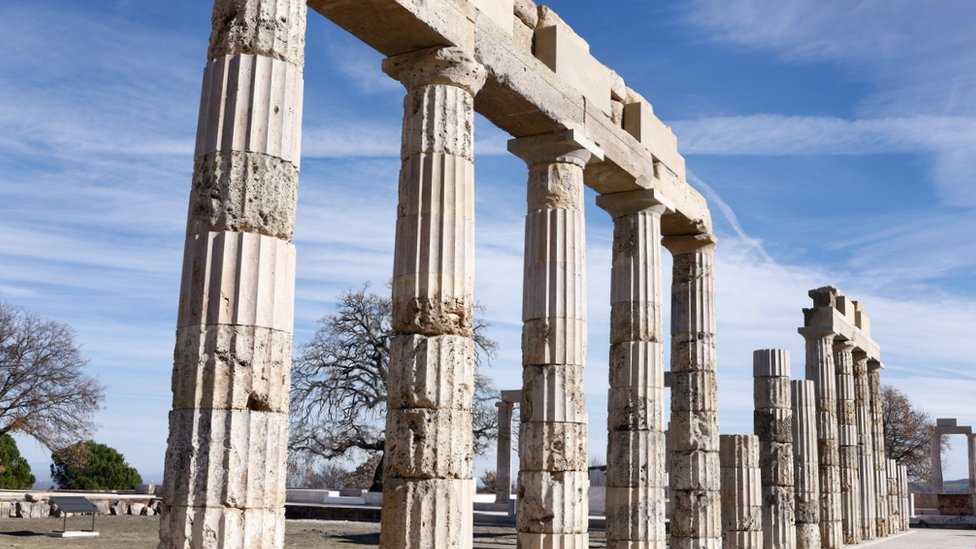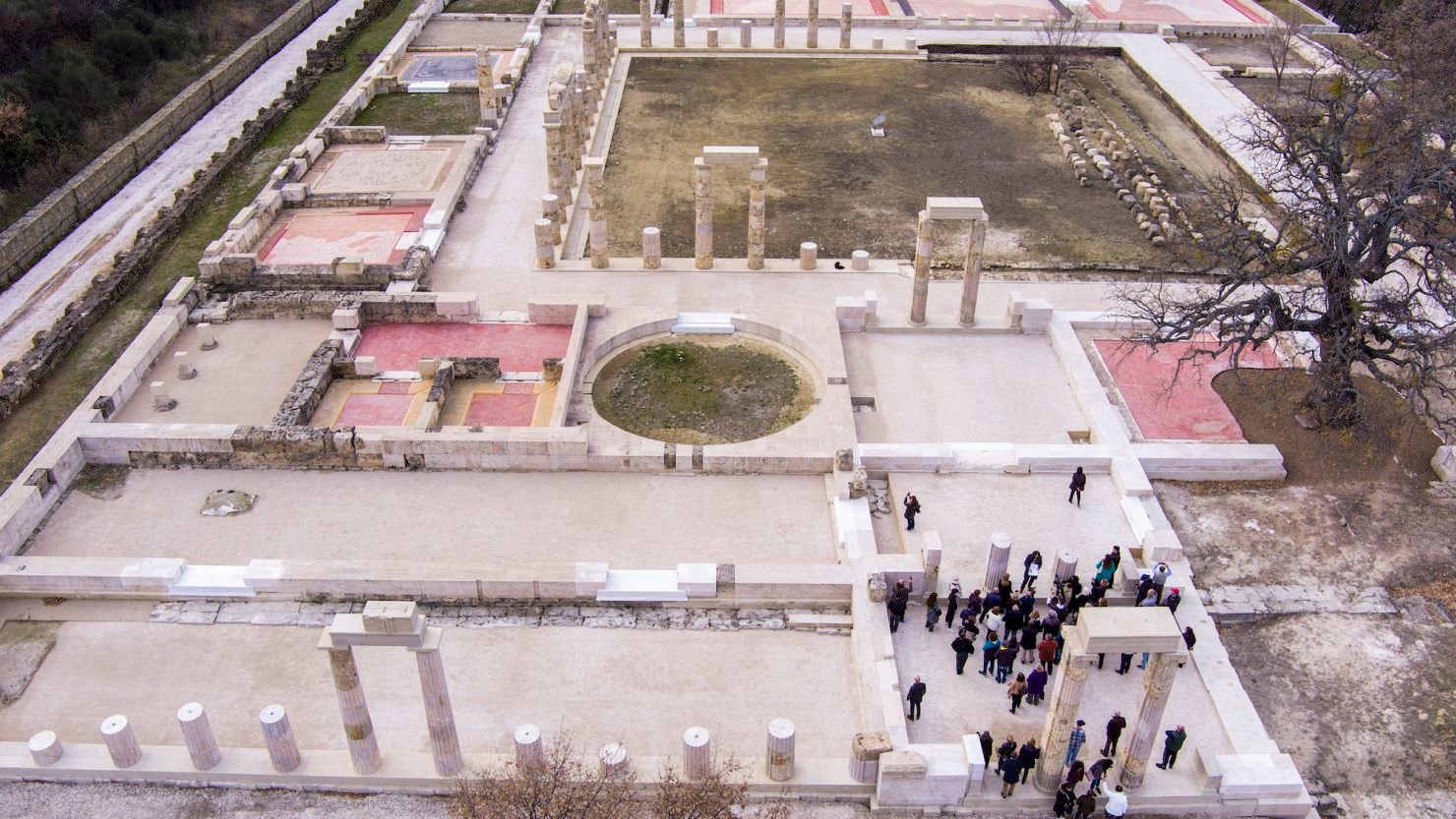The ancient Palace of Aigai in Greece, where Alexander the Great was crowned King of Macedonia around 2,400 years ago, has been reopened after an extensive restoration. The historic site, also known as the Royal Metropolis of the Macedonians, had been closed to visitors during the restoration process.
Covering an expansive area of approximately 15,000 square meters, the palace holds significant historical importance in classical Greece. Built primarily in the 4th century BCE by Philip II of Macedonia, the father of Alexander the Great, the palace witnessed pivotal moments, including Alexander’s ascension to the throne following his father’s assassination.

Greek Prime Minister Kyriakos Mitsotakis, present at the reopening ceremony, highlighted the palace’s role in initiating Alexander’s remarkable campaign. Alexander the Great’s conquests stretched across regions including modern-day Greece, Iran, Egypt, and extended as far as northern India and central Asia. His empire marked the beginning of the Hellenistic period, influencing the eastern Mediterranean for the next 1,000 years.
Despite its historical prominence, the Palace of Aigai faced destruction at the hands of the Romans in 148 BCE, followed by frequent looting in subsequent years. The restoration project, undertaken by the Greek Government with support from the European Union and an investment exceeding 20 million euros, spanned 16 years.
The meticulous restoration involved excavating the site, documenting and conserving discovered artifacts, and renovating 1,400 square meters of mosaics, marble flooring, and columns while preserving the general appearance of the ruins. Prime Minister Mitsotakis acknowledged the global importance of the restoration efforts, emphasizing their international significance.
The restored Palace of Aigai serves as a testament to the enduring legacy of Alexander the Great and the rich cultural heritage of ancient Greece. Mitsotakis stressed the universal value of such monuments, transcending local boundaries and becoming part of humanity’s shared cultural heritage. Custodians, he noted, have a responsibility to protect, promote, highlight, and continually unveil the horizons revealed by each facet of these precious historical sites.
The reopening of the Palace of Aigai allows visitors to witness the grandeur of a site where pivotal moments in history unfolded. It stands as a symbol of the resilience of historical treasures and the efforts invested in preserving and showcasing the rich tapestry of ancient civilizations.
As travelers explore the restored palace, they can immerse themselves in the echoes of the past, gaining insights into the life and times of Alexander the Great. The grandeur of the architecture, the intricate mosaics, and the historical significance embedded in every stone offer a unique journey back in time.
The restoration not only revitalizes the physical structure of the palace but also rejuvenates the narratives and stories it holds. The Palace of Aigai, now open to the world, invites enthusiasts, historians, and curious minds to delve into the annals of ancient Greece and witness the grandeur of a place where a young Alexander took the first steps toward building an empire that would shape the course of history.
